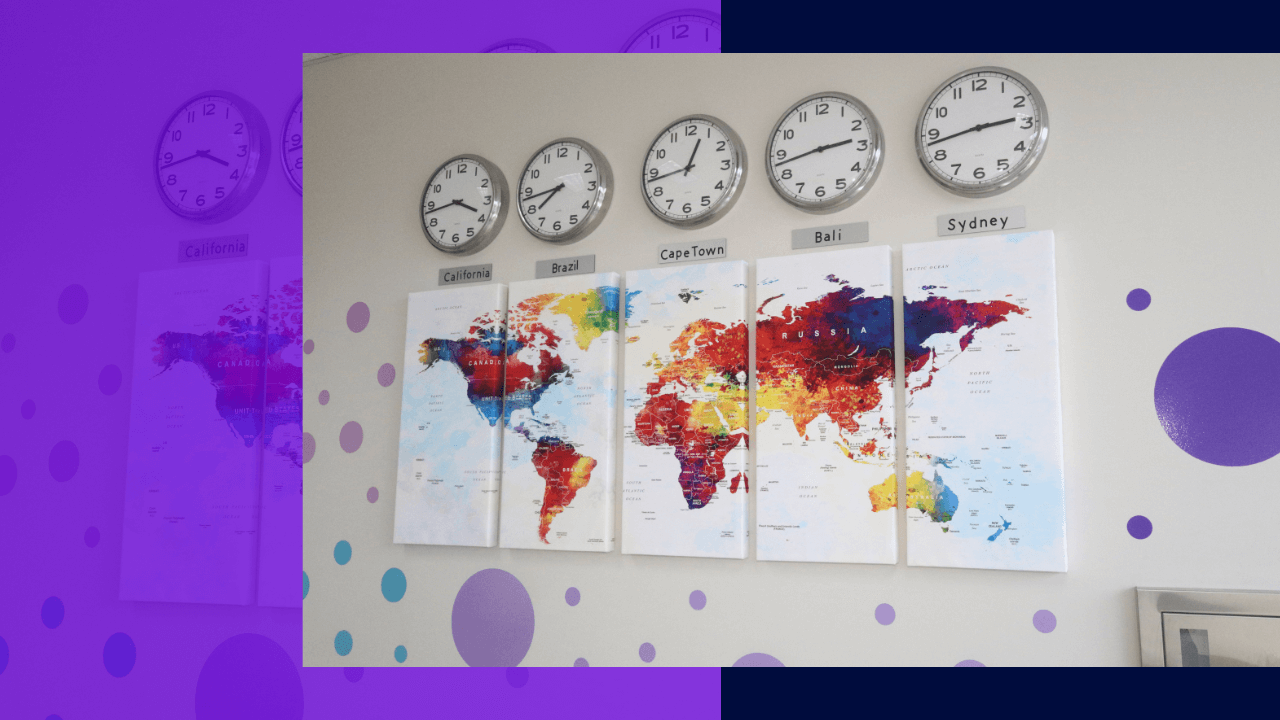Navigating cultural and time zone differences: A guide for outsourcing success

This article is a submission by Managed Services Partners. Managed Services Partners is an outsourcing agency with over six years of experience helping businesses improve operations and drive growth.
Outsourcing has become a strategic advantage for businesses looking to expand their operations, improve efficiency, and reduce costs.
The benefits of outsourcing are undeniable, ranging from cost savings to access to specialized talent. However, there are also challenges that need to be navigated, particularly regarding cultural and time zone differences.
Embracing these challenges and transforming them into opportunities can truly be a game-changer for businesses.
The benefits of outsourcing
Outsourcing advantages go beyond mere cost reduction. Organizations today seek to leverage diverse talent pools, enhance business agility, and foster innovation through collaboration with outsourced teams.
The ability to tap into a worldwide workforce means gaining access to varied perspectives, skills, and expertise. This blending of experiences can enhance problem-solving and creativity within teams, making businesses more competitive.
However, the globalization of work does not come without its issues, particularly when it comes to cultural and time zone discrepancies.
Organizations must be proactive in addressing these challenges to fully capitalize on the expansive benefits that outsourcing offers.
Understanding cultural dynamics
Culture impacts how people communicate, collaborate, and ultimately work together. Each country and region have unique customs, beliefs, and values that shape their work ethic and interpersonal relations.
As such, businesses that engage in outsourcing must prioritize understanding and respecting these cultural dynamics.
1. Research and educate
It’s essential for companies to research the cultures of their outsourcing partners. This includes understanding work habits, communication styles, and social norms.
For instance, some cultures may prioritize direct communication, while others might foster a more indirect approach. Recognizing these differences can reduce misunderstandings and foster smoother interactions.
2. Build cultural sensitivity
Organizations should create training programs for their teams to develop cultural sensitivity. This can include seminars on cultural awareness, role-playing exercises, and sharing team experiences.
By educating employees on the diverse backgrounds of their teammates, businesses enhance collaborative efforts, which leads to greater effectiveness.

3. Encourage open communication
An environment that encourages open communication can mitigate cultural disparities. By fostering a team culture that invites questions, clarifications, and discussions, misunderstandings can be reduced.
Encouraging team members to share their cultural traditions or communication preferences can further solidify team bonds.
Managing time zone challenges
Time zone differences are another common challenge that can disrupt collaboration. Many businesses outsource tasks to locations with significant time gaps from their headquarters, which can occasionally lead to delays in communication and workflow.
However, when managed effectively, these challenges can also provide unexpected advantages.
1. Flexible working hours
Emphasizing flexible working hours can significantly ease the burden of time differences. If teams are spread across various time zones, allowing for staggered hours ensures that there’s always some overlap for real-time collaboration.
Companies should be open to adjusting internal deadlines that accommodate the working hours of team members across time zones.
2. Utilize technology
In our digital age, technology plays a crucial role in bridging time zone gaps. Tools such as project management software, collaboration platforms like Slack or Microsoft Teams, and video conferencing applications enable teams to connect seamlessly regardless of location.
Setting clear expectations for communication and response times, alongside using technology effectively, can further facilitate smooth operations.
3. Regular team meetings
Scheduling regular team meetings is essential for maintaining a sense of unity within geographically dispersed teams. These meetings create opportunities for team members to connect personally and professionally, build rapport, and address challenges collaboratively.
Setting a consistent schedule that rotates meeting times can ensure equity among team members, allowing everyone to participate without being inconvenienced.
Fostering collaboration and team spirit
To truly navigate cultural and time zone differences, fostering collaboration and a team spirit is critical.
Team cohesion often leads to enhanced productivity and creativity, making the outsourcing experience more rewarding.
1. Celebrate diversity
Celebrating cultural differences can create a more inclusive atmosphere. Organizations can initiate cultural exchange programs where employees exchange experiences, traditions, or even culinary practices.
Recognizing cultural holidays and events celebrated by the team can contribute to a stronger bond among members.
2. Promote team-building activities
Regular team-building activities, whether virtual games or collaborative projects, can enhance interpersonal relationships.
These initiatives encourage teams to work together toward a common goal, emphasizing the importance of collaboration and mutual respect.
3. Encourage feedback
Constructive feedback is vital for team growth and development. Encourage team members to provide feedback on intercultural interactions and time management practices.
This feedback loop can lead to continuous improvements that benefit all parties involved.

Leveraging outsourcing as a game-changer
When effectively managed, navigating cultural and time zone differences can transform outsourcing from a mere operational necessity into a strategic advantage.
Below are ways these aspects can be seen as game-changers for businesses:
1. Enhanced problem solving
Diverse teams bring varied viewpoints and approaches to problem-solving. When team members are encouraged to share their cultural perspectives, they can collaboratively devise unique solutions that might not emerge in a more homogeneous setting.
This enriched problem-solving capacity not only benefits the immediate project at hand but also contributes to long-term organizational resilience and adaptability.
2. Increased productivity
With teams operating across different time zones, work can essentially be continuous. For instance, while one region wraps up its workday, another round may begin, ensuring projects maintain momentum.
This strategic implementation of “follow-the-sun” work schedules can dramatically increase productivity, allowing companies to leverage global talent more effectively.
3. Ability to enter new markets
Engaging with a diverse team helps bring insights into different market needs, consumer behaviors, and local customs. By understanding these nuances, businesses can tailor their products or services more strategically and effectively for local and international markets.
This competitive edge can be a game-changer for companies looking to expand their reach.
4. Strengthened organizational culture
Companies that actively build an inclusive culture tend to attract top talent. Employees are more likely to feel valued and engaged when they work in an environment that celebrates diversity.
A robust organizational culture reinforces loyalty and commitment, resulting in lower turnover and higher job satisfaction.
5. Greater business agility
Flexibility around working hours and cultural acceptance equips organizations with the agility needed to pivot quickly in response to market changes.
When teams are accustomed to collaborating across time zones and cultures, they can adapt to challenges and seize opportunities without the constraints that a rigid structure would impose.







 Independent
Independent




